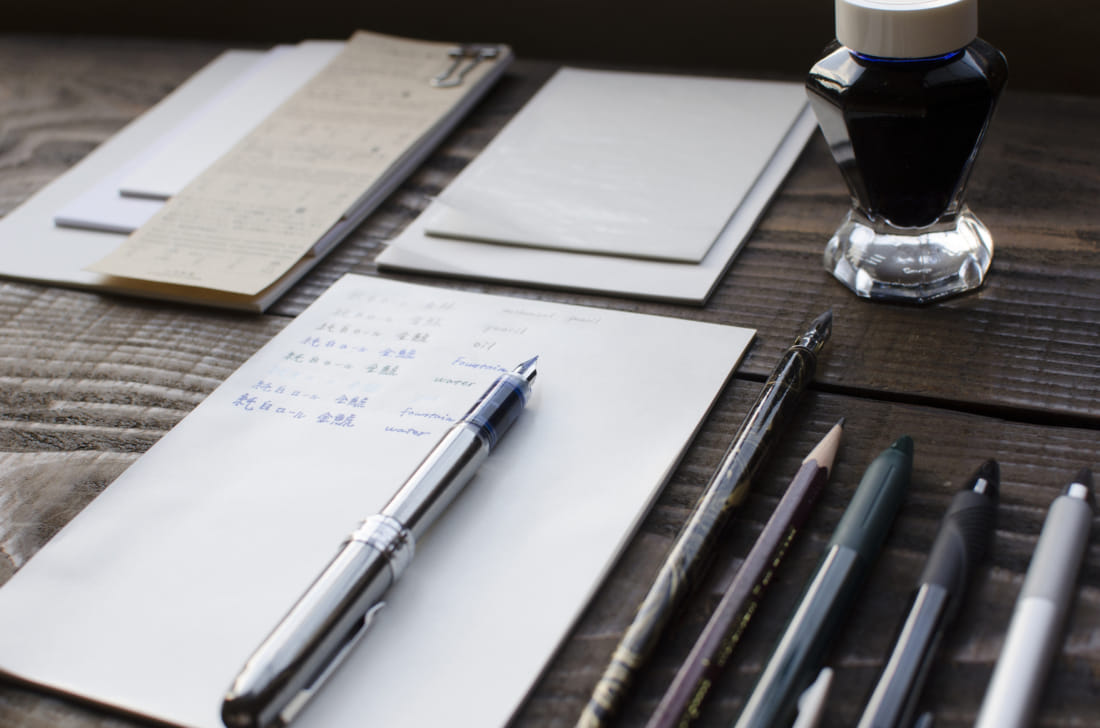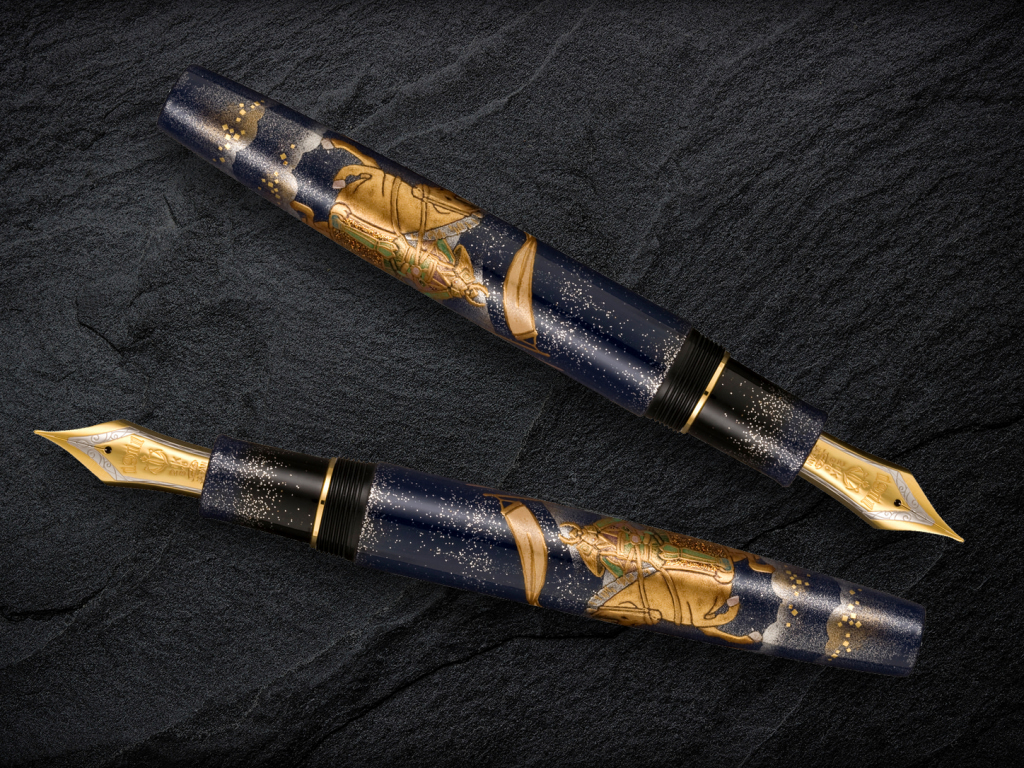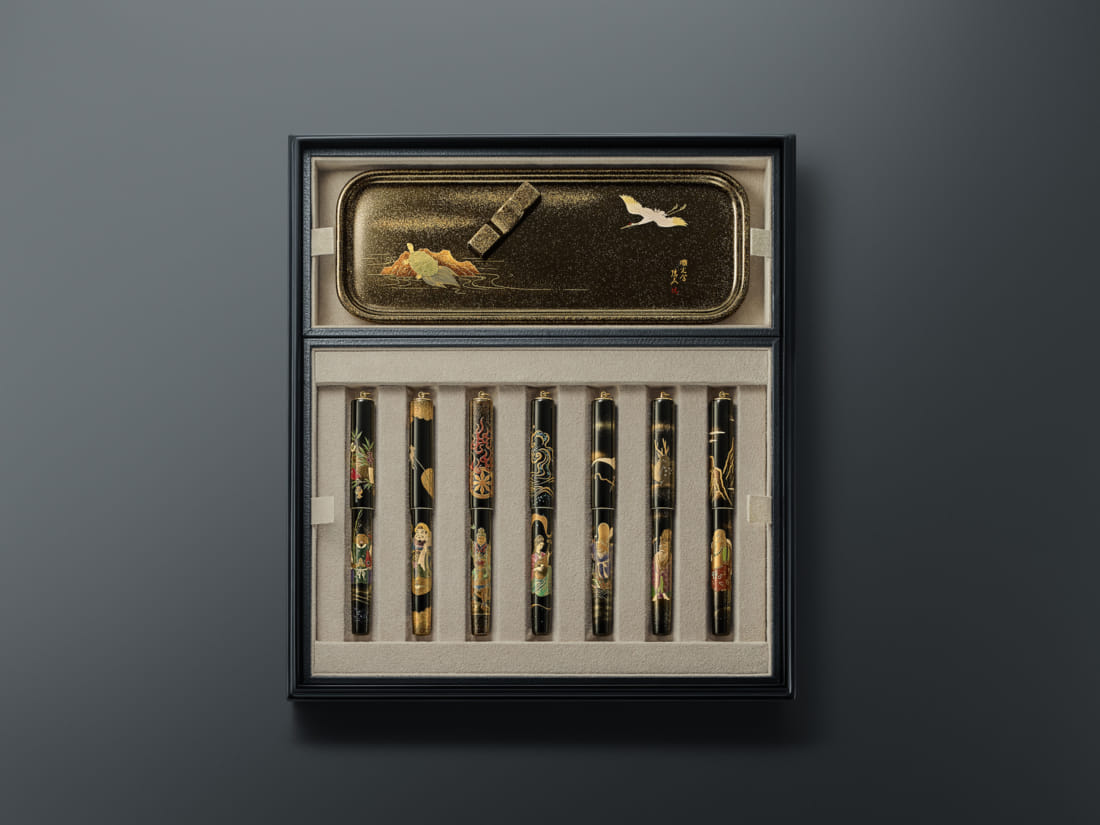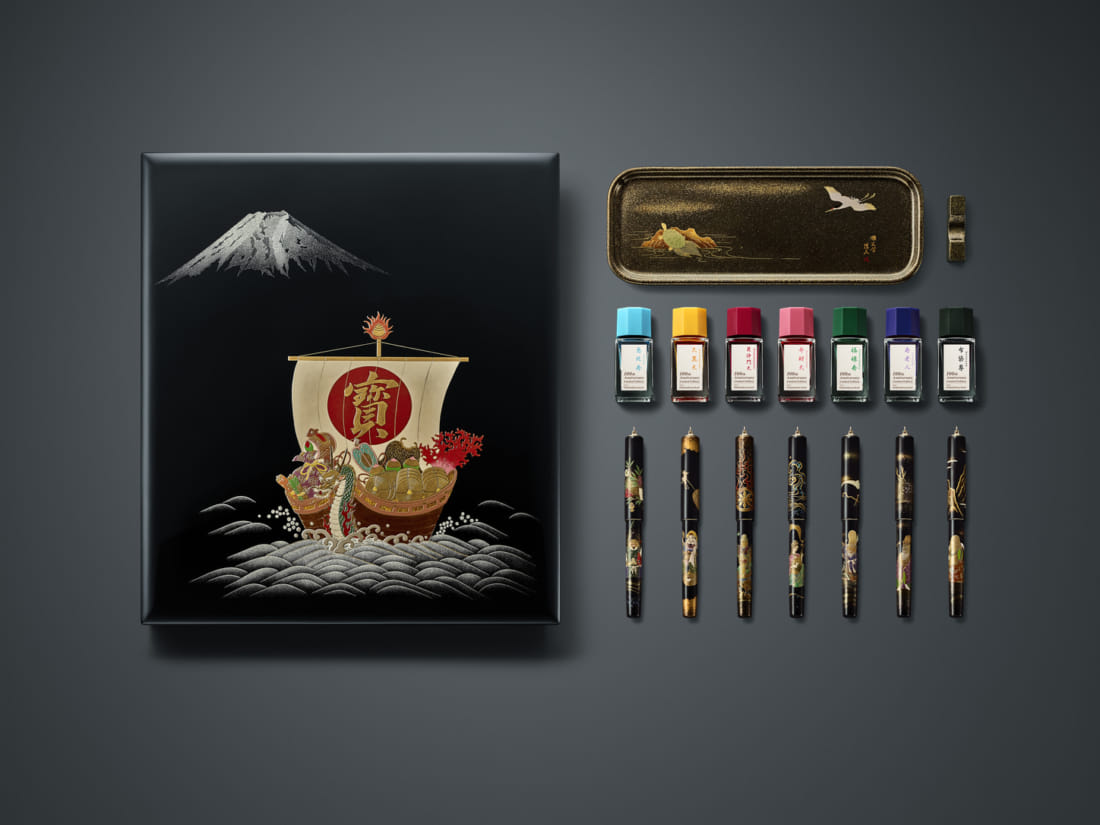According to ancient maxim, the pen is mightier than the sword. But you probably threw out your pens a long time ago and replaced them with an iPhone. So why are people traveling thousands of miles to Japan just to salivate over Japanese fountain pens?
The phenomenon is unmistakable; as you ascend to the third floor of Itoya, a 12-story stationery store in the heart of Ginza, a horde of stationery lovers are assembled from all around the world gazing down at lines of glass countertops, like a scene out of an art gallery.
Under the countertops lie four thousand different pens and accessories – according to Itoya – and around one hundred types of inks. From golden Mount Fuji to blushing sakura blossoms to a phoenix soaring through the sky, each pen is a canvas painstakingly crafted by octogenarian pen-craftsmen from across Japan.
Best of all? You can experience each piece of art and sense the efforts by the artisans. You can feel the polish of the lacquer layered on the barrel, the hardness of the ebonite used for the body, the coldness of the metallic flourishes, and of course the smooth surface of the gold nib as it glides effortlessly across silky smooth paper. Wouldn’t recommend doing this at the Louvre.
“Even if I can’t buy everything, I can appreciate it,” said Jaustine-Ann Doble, 22, an American student traveling in Tokyo. “There is a sense of joy seeing each piece of art.”
Japanese Fountain Pens’ Worldwide Popularity
While there are many affordable options, some pens on the sales floor could easily max out your credit cards. For example, Sailor’s samurai-themed fountain pen dubbed “Samurai: the Battle of Sekigahara” is priced at 1 million yen. Pilot’s 100th anniversary “Seven Gods of Good Fortune” pen set retails for 5 million yen.
The allure of writing is definitely creeping its way back into people’s daily lives again. This is no surprise for those in the industry, as stationery products have been flying off the shelves in the past couple of years, often aggressively picked up by non-Japanese stationery afficionados.
“People realized the value of analogue after going all in on digital,” said Taizo Yamamoto, the CEO of an Osaka stationery brand, Yamamoto Papers.
“Humans are by definition analogue,” adds Kaoru Yamagishi, owner of Bungubox, a boutique fountain pen store in Omotesando. “I think no matter how far digitalization advances, the human brain will still crave for the analogue…. The human brain goes into full gear when we write with pen and paper.”
The growing trend in Japan is helped by the millions of foreign tourists whose arrivals are growing each year. Forty to 50 percent of her customers are foreigners, says Yamagishi, an increase from about 30 percent when the Omotesando store opened in 2016.
Fountain Pens by the Numbers
Many local players have racked their brains over how to capture this new, dynamic market. According to Euromonitor Global, an international market research firm, global fountain pen retail sales are up 17.61 percent in 2019 from five years earlier, reaching $1.157 billion, with Japanese fountain pen retail sales up 19.23 percent during the same period, reaching $15.5 million in sales.
The increase in foreign visitors and “their buying power and social media presence have become a major force in revitalizing the industry,” said Yamagishi.
Foreigners “spend twice as much money as the Japanese,” said Hirose, the owner of Kakimori, a custom notebook and pen store in Kuramae. “They say our notebooks are cheap. The pens are cheap. The Japanese have never said that.”
Booming sales, however, comes with its own set of challenges. “There are websites that copy popular fountain pens and sell them for low prices” said Yamagishi. “Another problem is resellers. Exchange students studying in Japan are buying up limited edition fountain pens and inks, and are selling them for a markup in their home countries. It’s ruining the price structure.”
Most millennials likely have not yet experienced the sensation of a fountain pen gliding on their smooth paper with eclectic inks parading your feelings in the truest form. But for those who have, the return of the fountain pen is a welcome sight. As people realize the need to unplug, maybe the fountain pen is the remedy we need for our analogue brain.

Fine Japanese Paper to Go with the Pen
Just as lovers of fine wine want good cheese and vice versa, pen connoisseurs crave for good paper. For fountain pen lovers, finding the perfect combination is the holy grail.
For those in the know, the quest of discovering the right paper leads them to a rarefied region of Tokyo. The somewhat old but neighborly Kuramae, just a stone’s throw away from Asakusa, is steeped in traditional craftsmanship and is home to Kakimori, a custom notebook, pen, and ink store.
Inside the store, visiting clients can see custom notebooks built right before their eyes with papers and accessories from local craftsmen around the neighborhood, and if lucky, you can even find yourselves on a tour of the surrounding area and see firsthand how Japanese paper is made.
Japanese notebooks use great paper, said Adam Rod, 29, an international tax consultant from Czech Republic currently living in Tokyo. “It’s really hard to find” good letter sets back home in the Czech Republic, he says.
Quality Paper
Some particular qualities you should look for, according to Yamagishi, the owner of Bungubox, is the paper’s ability to withstand fountain pen ink so it doesn’t spread or feather, or bleed through.
A popular memo pad by Bungubox uses a special Yupo paper, a tree-free synthetic paper made with recyclable polypropylene thermoplastic polymer(PTP), in order to meet the demands of the fountain pen. The high-tech paper allows the ink to “float” on the paper and it also accurately reproduces the variation in ink color, said Yamagishi.
Another paper favored by the fountain pen community is the Tomoe River FP. Its ink friendly properties in combination with its ultra-thinness, 52 gsm in comparison with regular printer paper’s 80 gsm, makes it especially suited for those who need an everyday carry.











